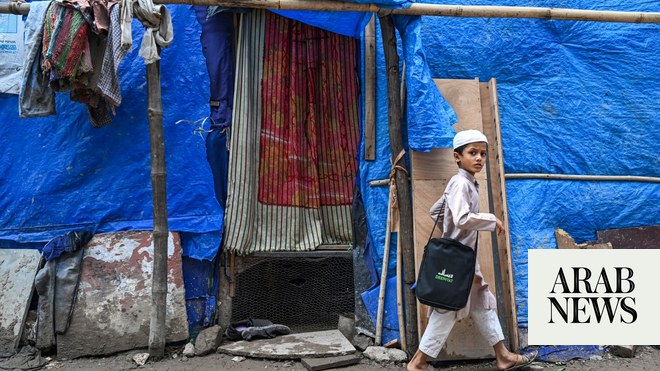
International experts have identified six sites near the existing camp housing about 700,000 Rohingya refugees from Myanmar
The latest wave of refugees into Bangladesh began after attacks by Rohingya insurgents on Myanmar security personnel last Aug. 25
BANGKOK: A human rights group urged Bangladesh’s government on Monday to abandon plans to relocate Rohingya Muslim refugees to a small, uninhabited island said to be at severe risk of serious flooding.
Human Rights Watch said in a report released in Bangkok, Thailand, that international experts have identified six sites near the existing camp housing about 700,000 Rohingya refugees from Myanmar that could provide better and safer conditions and could accommodate more than a quarter of a million people.
“Relocation of a significant number of refugees to less densely packed camps, with fewer environmental risks and adequate standards of services, is crucial for the health and well-being of all the refugees,” the group said.
The New York-based organization said Bangladesh’s government plans to move 100,000 people to Bhasan Char island very soon, but warned that — in addition to its susceptibility to flooding — its isolation and the lack of assurance of freedom of movement would turn it into a de facto “immigration detention center.”
The latest wave of refugees into Bangladesh began after attacks by Rohingya insurgents on Myanmar security personnel last Aug. 25. Myanmar’s military responded with counterinsurgency sweeps and a scorched-earth campaign against Rohingya villages. It was accused of widespread human rights violations, including rape, murder, torture and the burning of Rohingya homes. Thousands are believed to have died. Previously, smaller-scale violence and discrimination led more than 200,000 Rohingya to flee Myanmar between 2012 and 2015.
The report, titled “Bangladesh Is Not My Country,” highlights the problems facing Rohingya refugees in the overcrowded Kutapalong-Balukhali camp — said to be the world’s largest refugee camp — in Cox’s Bazar, just across the border from western Myanmar.
It says the camp is unsustainable, that conditions put the refugees there at risk of disease epidemics, fire, community tension and domestic and sexual violence.
“Despite efforts by the refugees and aid agencies to strengthen huts, build safer infrastructure, and develop safety plans, the camps and their residents have remained highly vulnerable to catastrophic weather conditions,” the report adds.
However, the Bangladesh government’s insistence that the camps are temporary, until the Rohingya can return to their homes on Myanmar, has meant that it “has blocked the construction of permanent structures, including cyclone-resistant buildings, and has not allowed for other infrastructure that would suggest longer-term stay,” Human Rights Watch said.
Bhasan Char island “appears unsuitable for accommodating the refugees,” says the report, citing experts declaring it “could become completely submerged in the event of a strong cyclone during a high tide.”
It says there are six other more feasible relocation sites just west of the existing Kutupalong-Balukhali that could accommodate 263,000 people.
Human Rights Watch called on donor governments and intergovernmental organizations to help Bangladesh provide humanitarian aid and also to pressure Myanmar to allow the safe and sustainable return of the Rohingya to their homes there.
The Muslim Rohingya face official and social discrimination in predominantly Buddhist Myanmar, which denies most of them citizenship and basic rights. They are considered immigrants from Bangladesh, even though many families settled in Myanmar generations ago.










